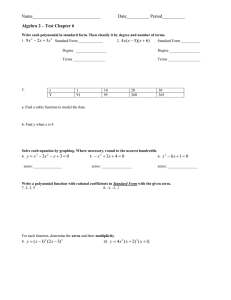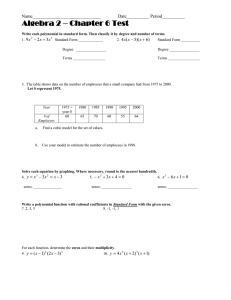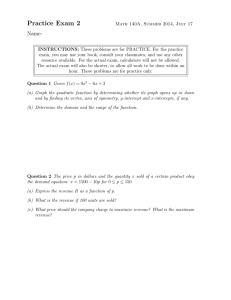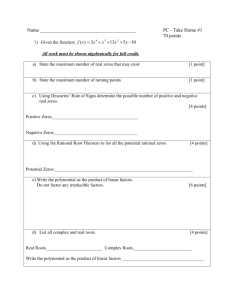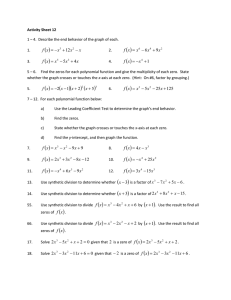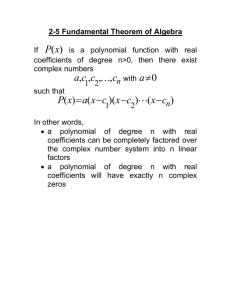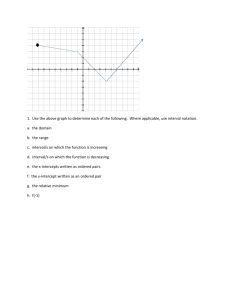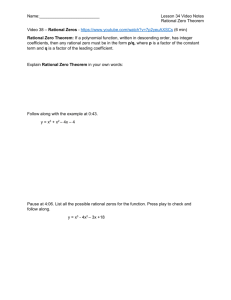Rational Zero Theorem
advertisement
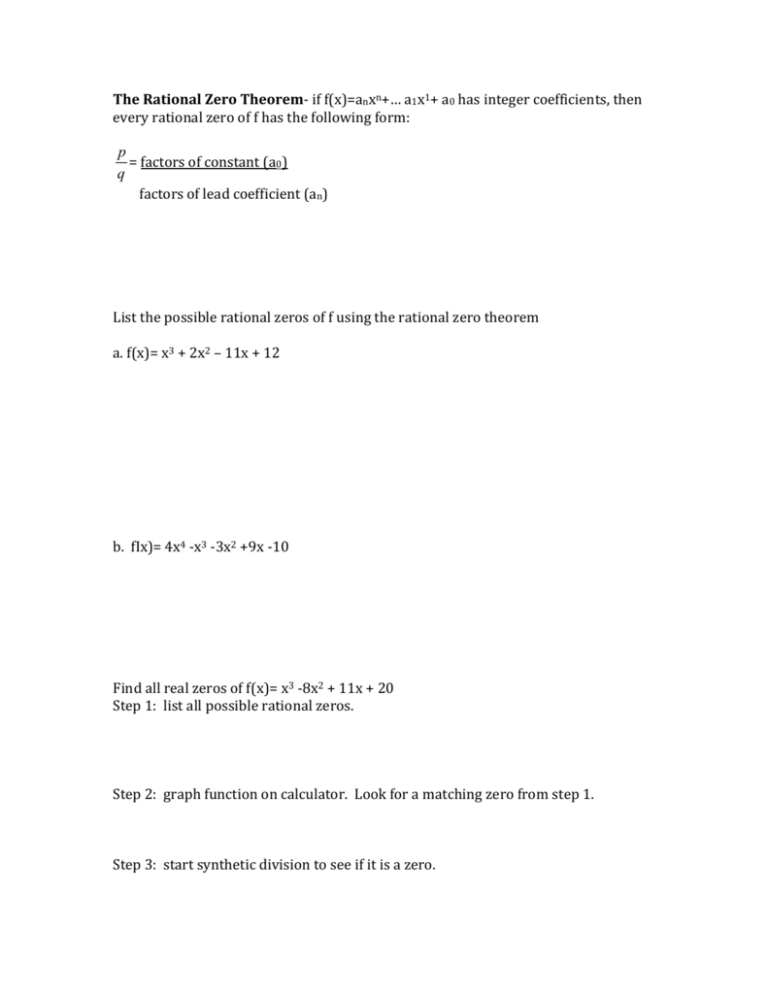
The Rational Zero Theorem- if f(x)=anxn+… a1x1+ a0 has integer coefficients, then every rational zero of f has the following form: p = factors of constant (a0) q factors of lead coefficient (an) List the possible rational zeros of f using the rational zero theorem a. f(x)= x3 + 2x2 – 11x + 12 b. fIx)= 4x4 -x3 -3x2 +9x -10 Find all real zeros of f(x)= x3 -8x2 + 11x + 20 Step 1: list all possible rational zeros. Step 2: graph function on calculator. Look for a matching zero from step 1. Step 3: start synthetic division to see if it is a zero. Find all real zeros of f(x) = 10x4-11x3 -42x2 +7x + 12 Step 1: List all possible rational zeros Step 2: graph function on calculator. Look for matching zero from step 1 Start 3: Synthetic division.- You will have to perform synthetic division twice to get to a quadratic since it is degree 4. Descartes Rule of Signs- another way to narrow down zero search The number of positive real zeros of f equal the number of sign changes in the sign of the coefficient of f(x) or is less than this by an even number. The number of negative real zeros of f is equal to the number of sign changes of the coefficients of f(-x) or is less than this by an even number. F(x)= x6 – 2x5 + 3x4 -10x3 -6x2 -8x -8
